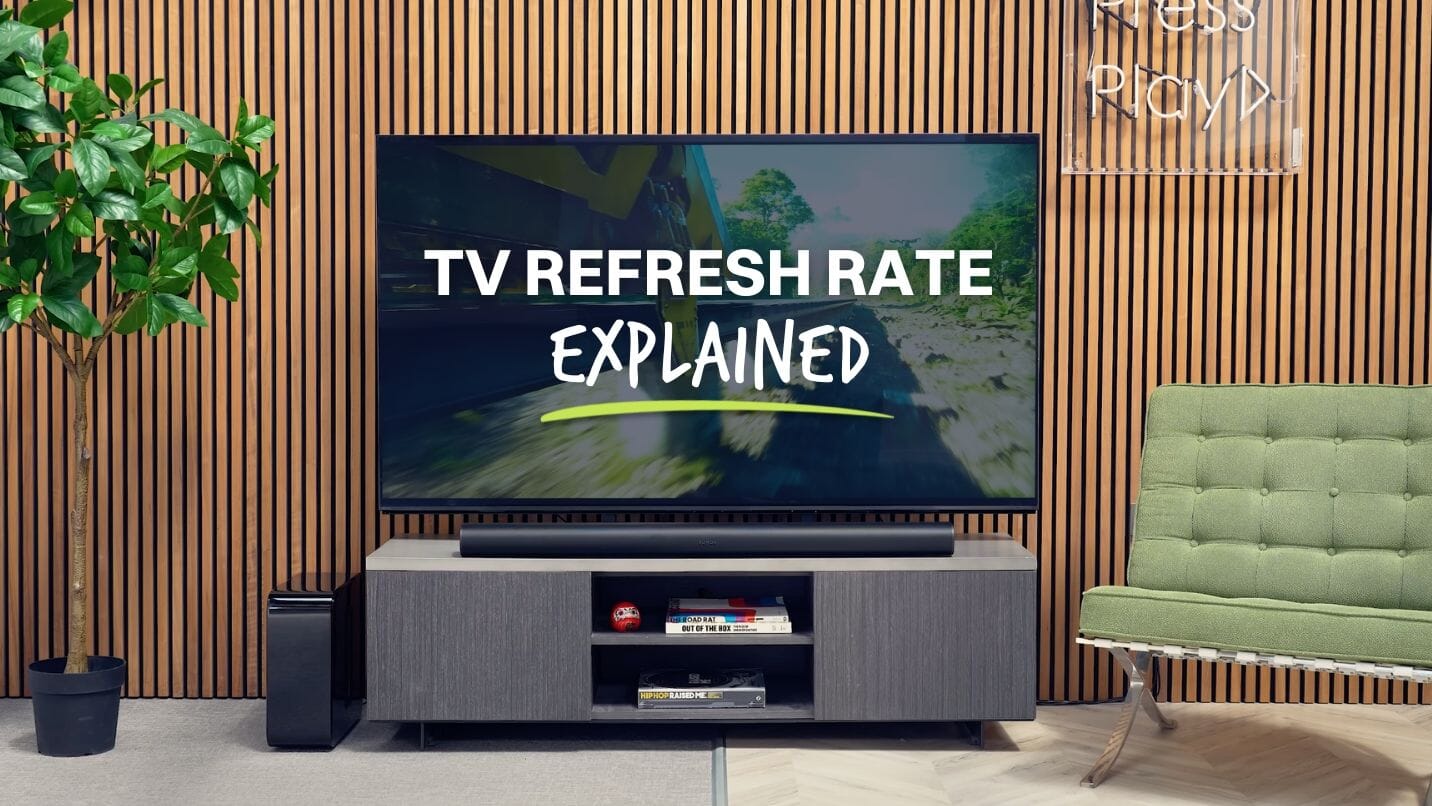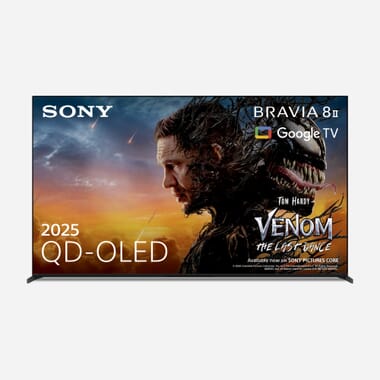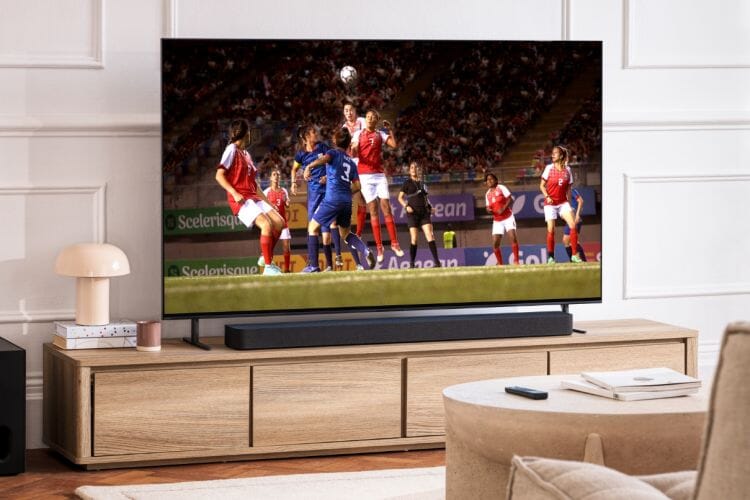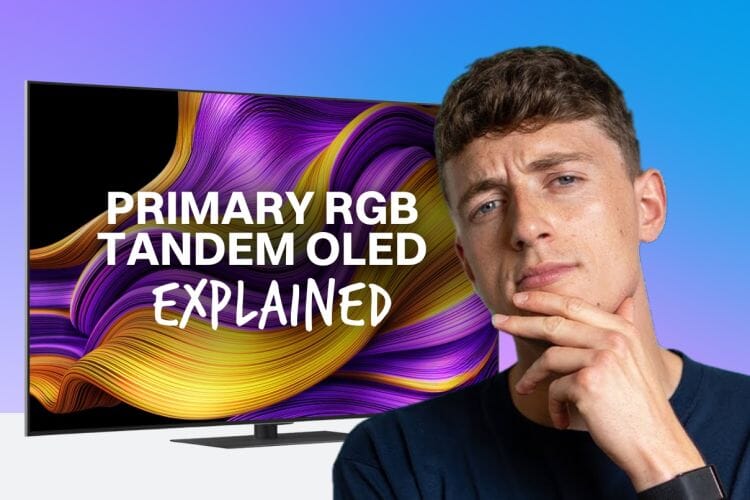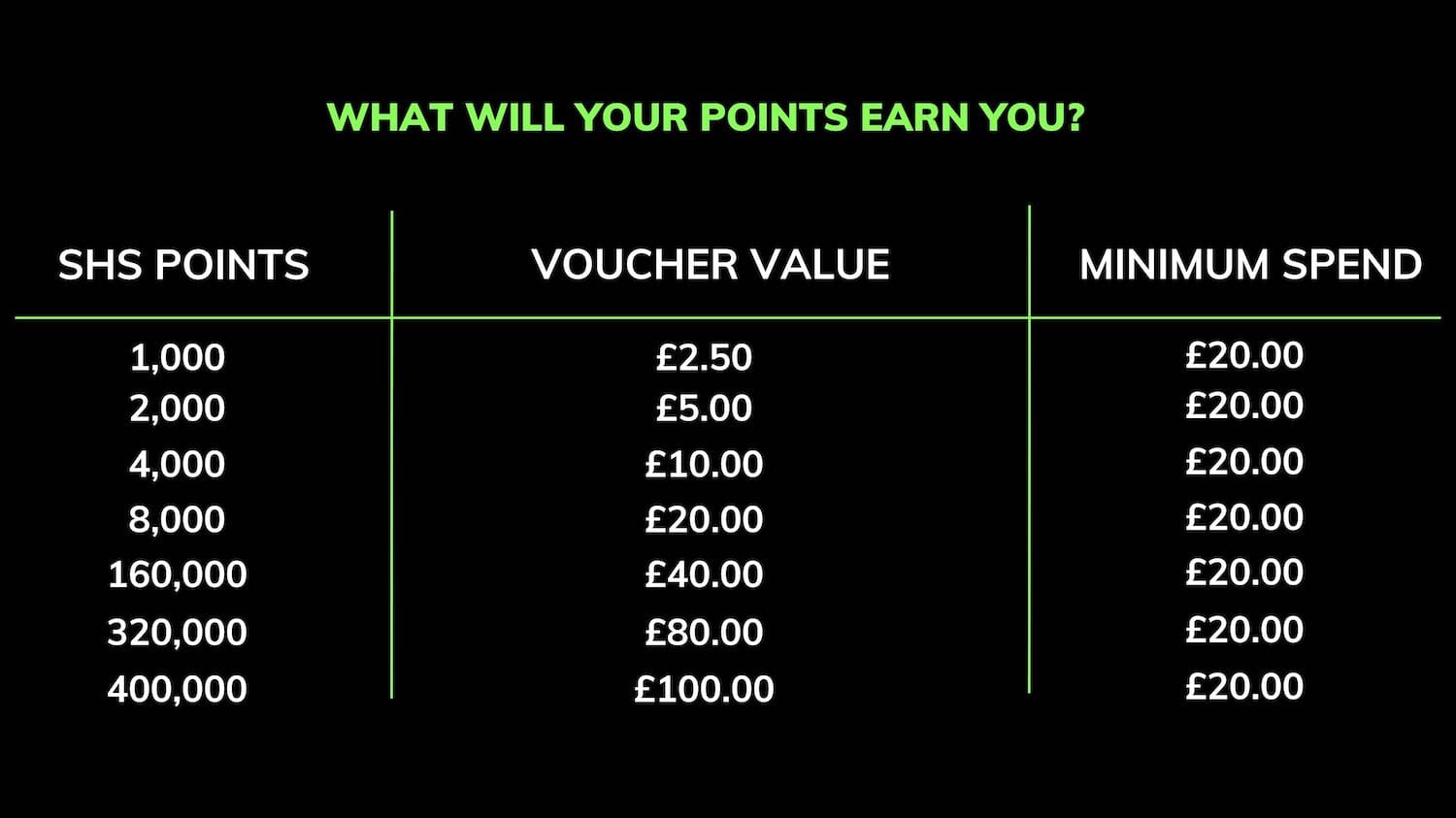60 Hz vs. 120 Hz: Which TV Refresh Rate is Best?
When shopping for a new TV, you might’ve run into technical terms such as “TV refresh rate” and wondered what does it all mean?
It's not just marketing fluff. Refresh rate is a specification that influences how smooth motion looks on screen and whether you’re watching live sports, gaming or just binging Netflix.
This guide explains what refresh rate means, how it affects your viewing experience, debunks common myths, and shows how Smart Home Sounds can help you find the right TV for your needs.
TV Refresh Rate Cheat Sheet
| Use Case | Recommended Refresh Rate | Why it Works |
|---|---|---|
| Everyday viewing | 60 Hz | Handles Netflix, YouTube & live TV just fine |
| Sports | 120 Hz | Smoother motion for football, F1 & fast action |
| Console Gamng | 120 Hz + VRR | Unlocks full performance on PS5 / Xbox Series X |
| PC Gaming | 144–165 Hz | Great for high frame rate and competitive play |
| Cinema-Style Movies | 120 Hz (motion smoothing off) | Reduces judder in 24 fps films, keeps that cinematic feel |
What is TV Refresh Rate?
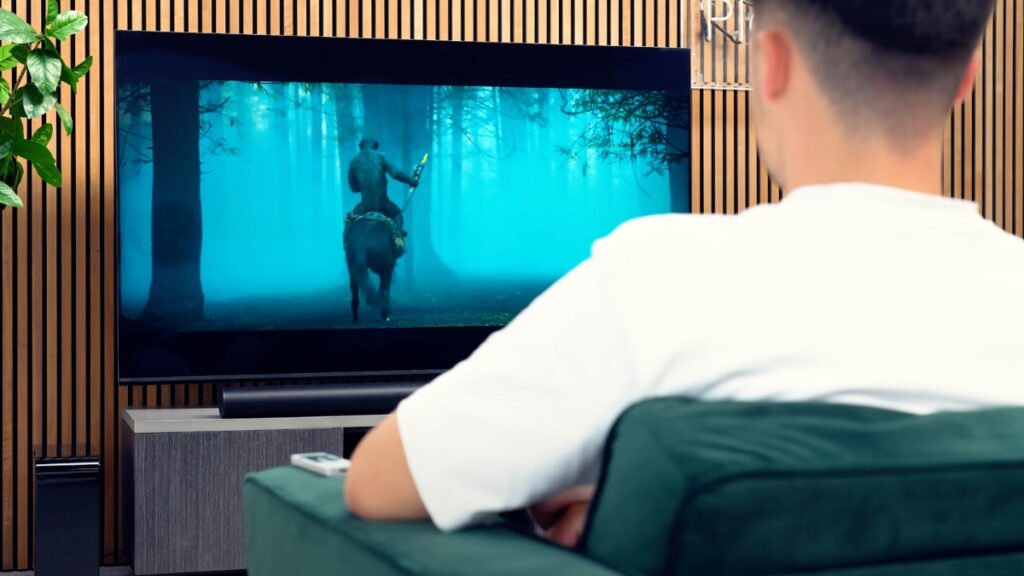
Every television constantly redraws the image on its screen. The refresh rate defines how many times per second the screen updates itself and is measured in hertz (Hz).
A 60 Hz TV refreshes its image 60 times per second, a 120 Hz TV refreshes 120 times per second, and so on.
This is different from frame rate, which is set by the source (for example a film or video game). Think of it this way: the frame rate is how many images your PlayStation or Netflix stream is sending out, and the refresh rate is how quickly your TV can show them.
When those two are in sync, everything looks nice and smooth. If they’re out of sync, you might notice stuttering or blurring, especially in fast-moving scenes.
How Does Refresh Rate Affect Picture Quality?

In short: a higher refresh rate makes everything look smoother, especially fast action.
When your TV refreshes more times per second, it can keep up better with fast-moving content like football matches, action scenes or racing games. Jumping from 60 Hz to 100 Hz or 120 Hz can make a big difference in how crisp and fluid things feel and it can even help reduce eye strain during long viewing sessions.
For gamers, a high refresh rate paired with a modern console like the PS5 or Xbox Series X means smoother motion, faster response times and a more immersive feel overall, especially in high-intensity games.
But refresh rate isn’t the only thing that affects picture clarity. The TV’s response time, motion processing and backlight tech all play a role too. Even some 120 Hz TVs still show blur if their response times are slow.
"Be careful, some TVs use a feature called motion interpolation to make content look extra smooth, but this can create what’s known as the soap opera effect. It makes films look a bit too slick, almost like a daytime TV drama, which takes away that classic cinematic vibe. Some people love it, others can’t stand it. Just know you can switch it off in your settings if it’s not your thing."
Lui - SHS Tech Guide
When Do You Need 120 Hz (or higher) and VRR?
Not everyone needs a 120 Hz television. For everyday viewing of news, streaming shows and films, a 60 Hz TV is usually sufficient because most content never exceeds 60 frames per second. A higher refresh rate becomes valuable in specific situations:
- Gaming: Modern consoles and gaming PCs can output 120 frames per second or higher. The latest gaming televisions use 120 Hz panels and some high‑end models can even stretch to 144 Hz or even 165 Hz for PC gaming.
- Fast‑moving sports: If you watch a lot of sports like, Football, Rugby or Formula 1, a high refresh rate will help your TV track fast‑moving objects in broadcasts.
- PC use: If you use your TV as a computer monitor, especially for high‑frame‑rate games, a high refresh rate ensures you benefit from smooth scrolling and reduced eye strain.
What is Variable Refresh Rate (VRR)?
VRR technology lets the television’s refresh rate adjust dynamically to match the frame rate of a game or PC, eliminating screen tearing and stuttering.
It pushes and pulls the refresh rate to deliver the highest‑quality image without stuttering or “screen tearing”. Historically, VRR used to be limited to high‑end televisions but its become much more common in mid‑range models more recently.
When combined with HDMI 2.1, VRR allows 4K at 120 Hz and supports features such as Auto Low Latency Mode for responsive gameplay.
Choosing The Right Refresh Rate
Not sure what refresh rate you actually need? Here's a quick guide based on how you use your TV:
| Use Case | Refresh Rate | Reason For Picking |
|---|---|---|
| General TV and streaming | 60 Hz | Most content, like Netflix and live TV, runs between 24 and 60 fps, so a 60 Hz TV does the job and usually costs less. |
| Sports fans | 120 Hz | A higher refresh rate helps reduce motion blur, so fast-moving action (like football or F1) stays smooth and sharp. |
| Console gamers (PS5, Xbox Series X) | 120 Hz plus VRR | Most modern games consoles can hit 120 fps. You’ll want to pair that with a 120 Hz TV and VRR for fluid, tear-free gameplay. |
| PC gamers and enthusiasts | 144 Hz or 165 Hz | Some high-end TVs push up to 144 Hz or even 165 Hz for ultra-smooth PC gaming. This is great for competitive gameplay, but for most people might be overkill. |
Remember that resolution (4K and 8K) and panel technology (OLED, QLED, Mini LED) also impact picture quality. A balanced set with a 120 Hz refresh rate, good response time and HDMI 2.1 ports will be ideal for most people.
High Refresh Rate TVs Available from Smart Home Sounds
If you want smoother motion for gaming or sports, a true high refresh rate TV makes a real difference.
We stock a range of models with native 120 Hz, 144 Hz and 165 Hz panels, all with features like VRR and HDMI 2.1, so you’re getting the performance benefits where it counts. And of course, they’re all backed by our five-year warranty for peace of mind.
| TV Model | Panel | Refresh Rate & VRR Capability |
|---|---|---|
| LG G5 | Primary RGB Tandem OLED | Native 120 Hz; VRR up to 165 Hz |
| Samsung S95F | QD-OLED | Native 100 Hz; AI‑driven Motion Xcelerator with VRR up to 165 Hz |
| LG C5 | OLED | Native 120 Hz; VRR up to 144 Hz with FreeSync and G‑Sync |
| Sony BRAVIA 9 | Mini LED | Native 120 Hz; 4K at 120 with VRR |
These examples show that high refresh rate TVs aren’t tied to one brand or display technology. Whether you prefer OLED, QD-OLED, or Mini LED, there are options that deliver smooth motion and gaming-grade performance.
Remember, this is just a snapshot. You’ll find even more models, including QNED and QLED sets with 144 Hz or 165 Hz refresh rates, in our full TV range below.
Why Buy Your TV From Smart Home Sounds?
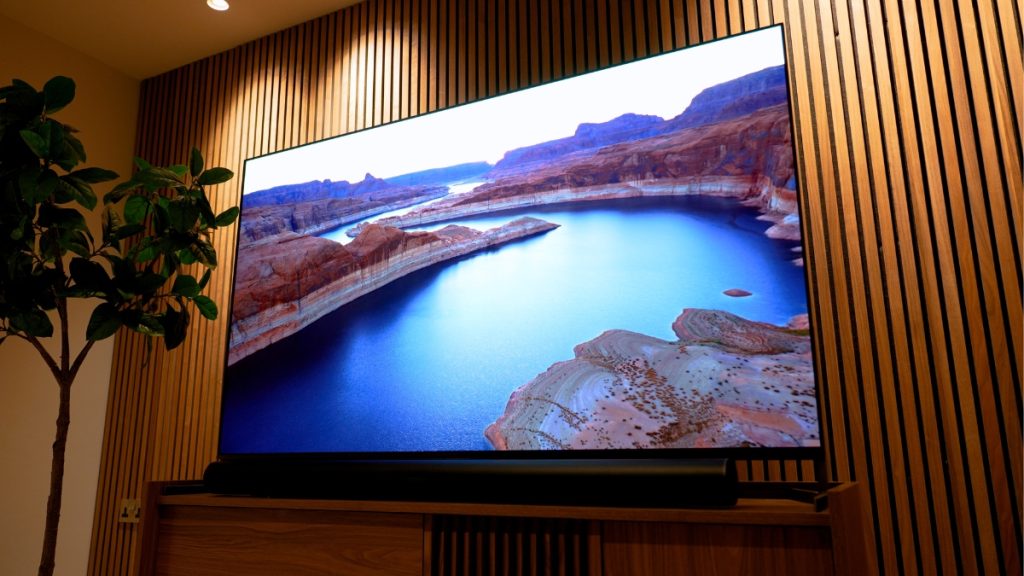
Smart Home Sounds is more than an online retailer; we are specialists in high‑quality home entertainment. Our customers trust us when shopping for a new television because:
- Top‑tier selection: We stock a range of carefully selected televisions from leading brands such as Sony, LG, Panasonic and Samsung. Our curated range includes the latest 2025 models with true 120 Hz and 144 Hz panels for gaming and sports.
- Five‑year warranty: Every TV comes with a five‑year warranty*, giving you long‑term peace of mind.
- Price match guarantee: We match UK authorised dealer prices and provide free, fast delivery across the country.
- Expert advice: Our team is made up of real people who love home cinema and gaming. We offer personalised recommendations via live chat, phone or email, helping you choose the right TV refresh rate and features for your needs.
- Experience before you buy: You can see many of these TVs in action at our Gloucester showroom. It’s a great chance to compare screens side by side, explore the differences between panel technology like OLED and QLED, and get hands-on with high refresh rate gaming setups. We also demo how a good soundbar or home cinema system can take your TV’s audio to the next level.
If you are ready to explore the latest televisions, browse our full TV range or visit our Gloucester showroom to experience the difference yourself.
Our Verdict
Refresh rate isn’t just a spec to tick off, it actually plays a big role in how smooth your TV looks, whether you're watching live sport, gaming, or just bingeing the latest series. A higher refresh rate can make motion feel cleaner and more fluid, especially when paired with other features like VRR and HDMI 2.1.
That said, not everyone needs 120 Hz. For everyday viewing, 60 Hz does the job just fine. But if you're into gaming or fast-paced action, a native 120 Hz TV is absolutely worth considering.
At Smart Home Sounds, we’re here to help you find the right setup. Whether that’s a stunning OLED for movie nights, a bright QLED for the living room, or a gaming-ready panel with all the latest features. And with our expert advice, fair prices and five-year warranty on every TV, you’re in good hands.
Other Useful Content
Blog: TV Buying Guide Everything You Need To Know
Blog: Sony Bravia 9 Review: The Right Choice in 2025?
Video: TV Panel Type Buying Guide: OLED vs QLED vs QNED vs Micro LED vs Mini LED & More
For more information about TVs, get in touch and one of our Tech Guides would be happy to help!
Why buy from Smart Home Sounds? We offer Lowest Price Guarantee, Free Next Day Delivery* and 0% Finance Available. Looking for more personal advice? Contact our team of experts today. Shop TV



